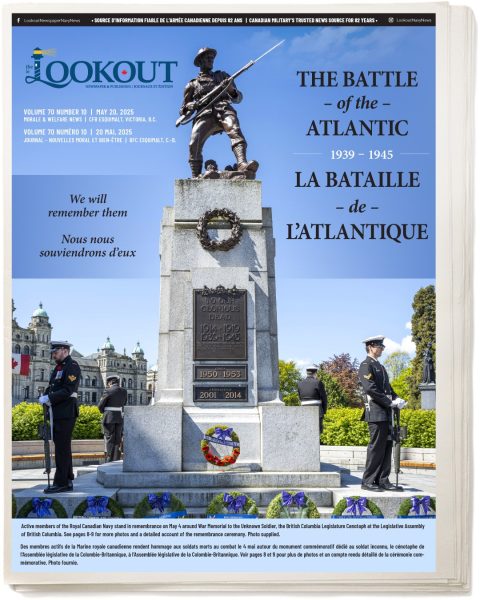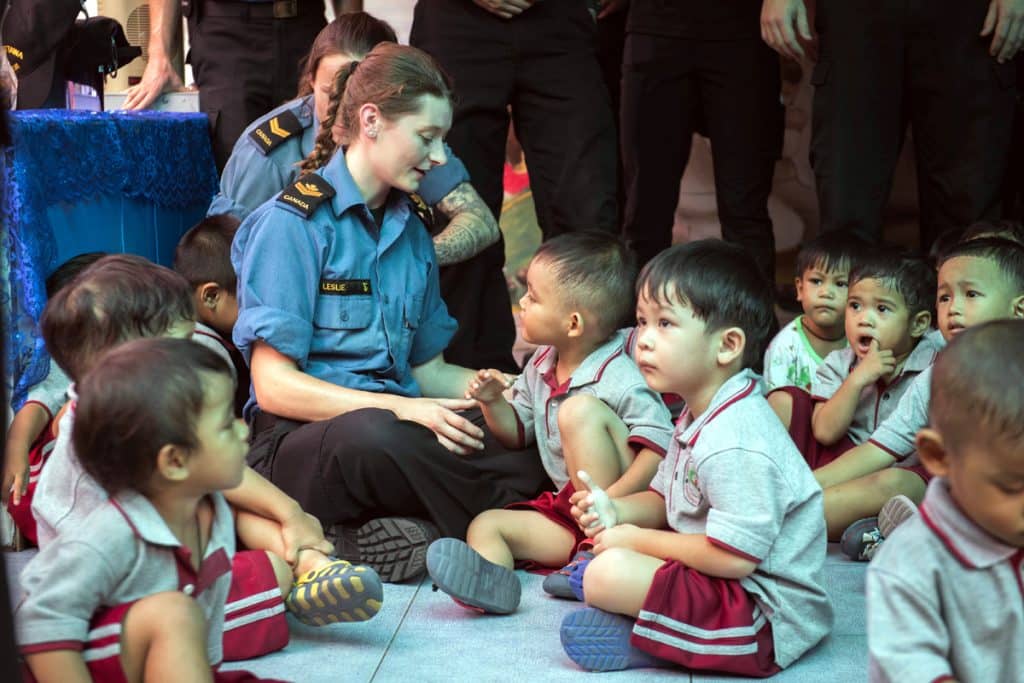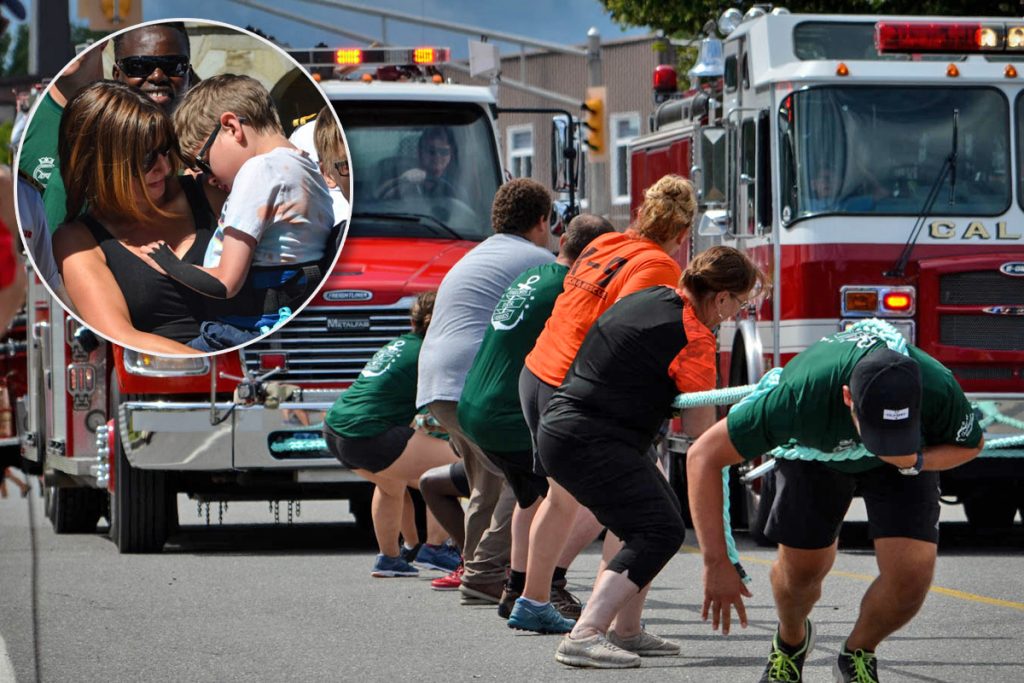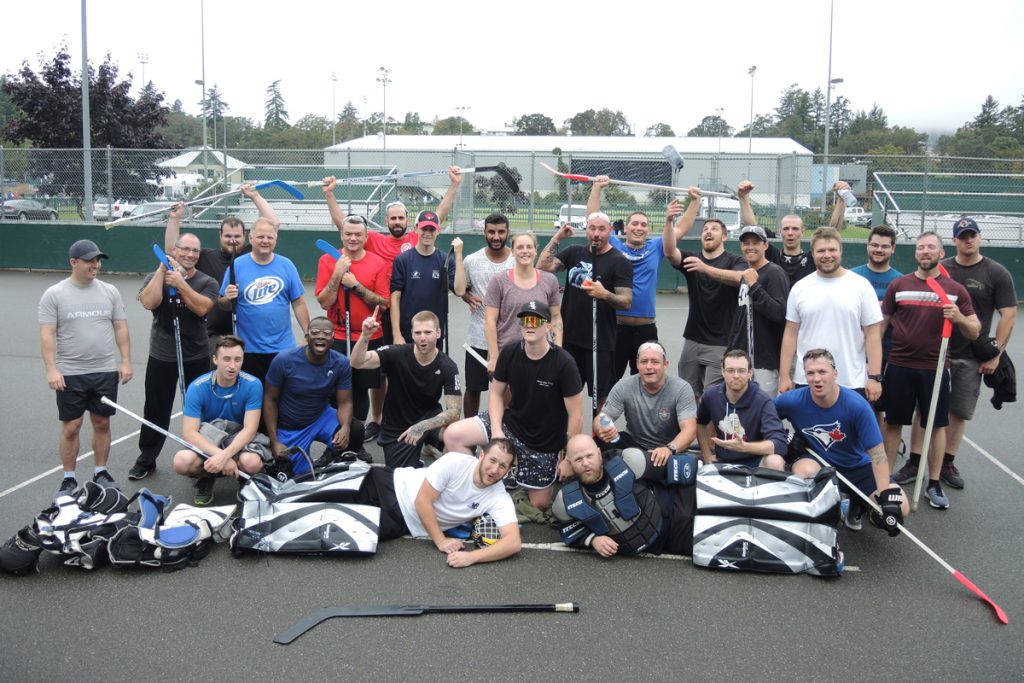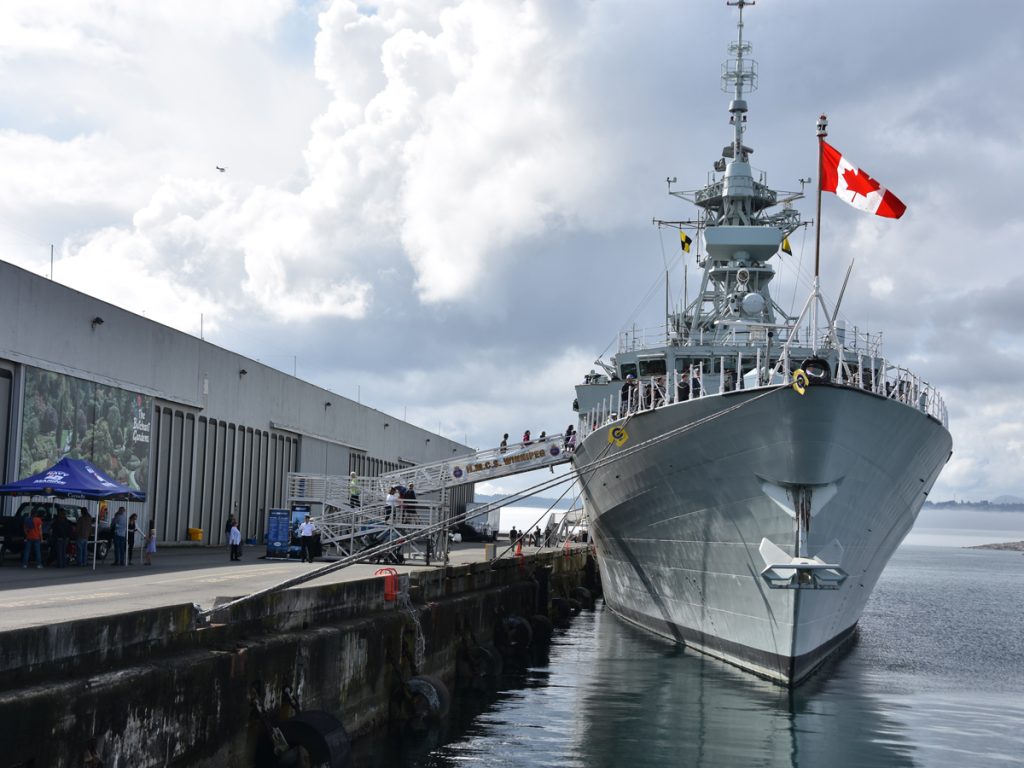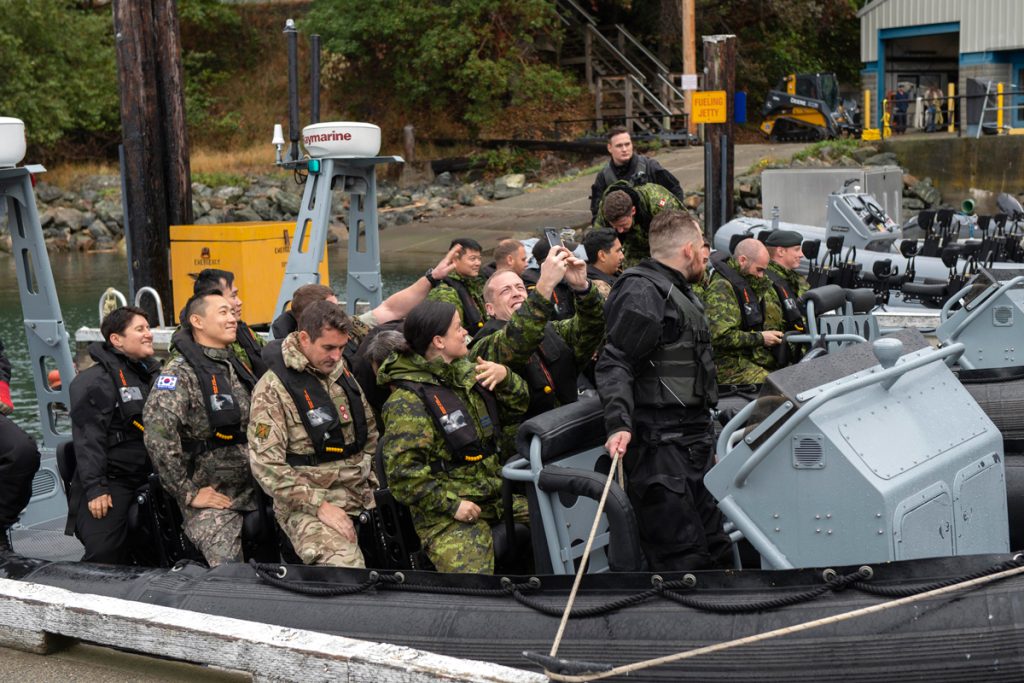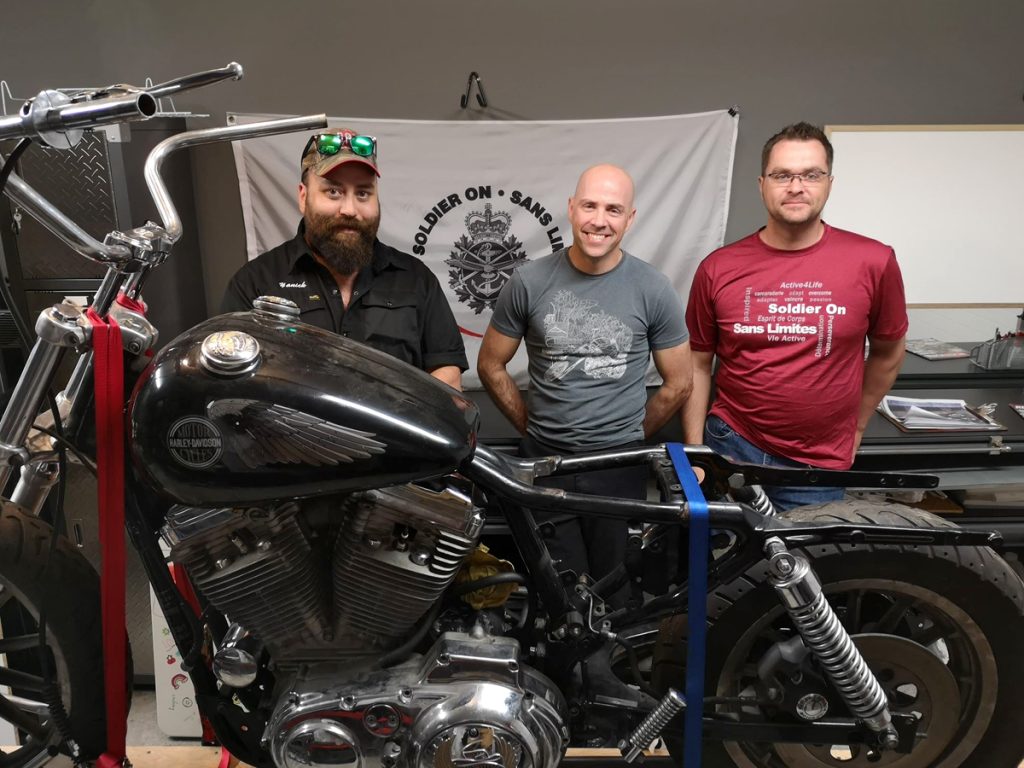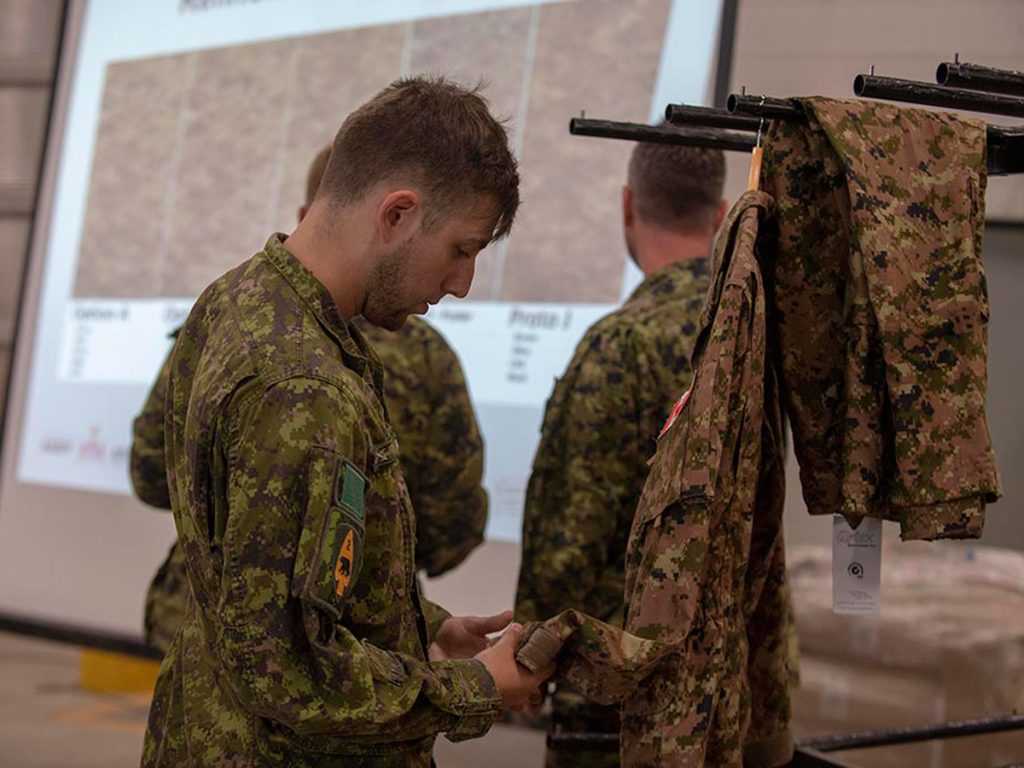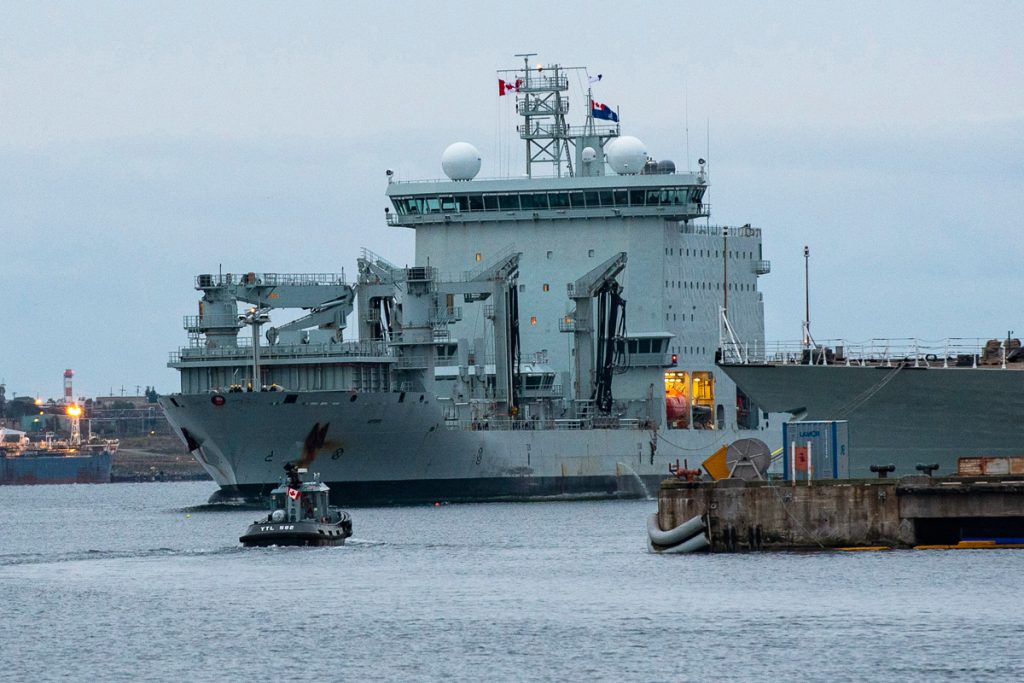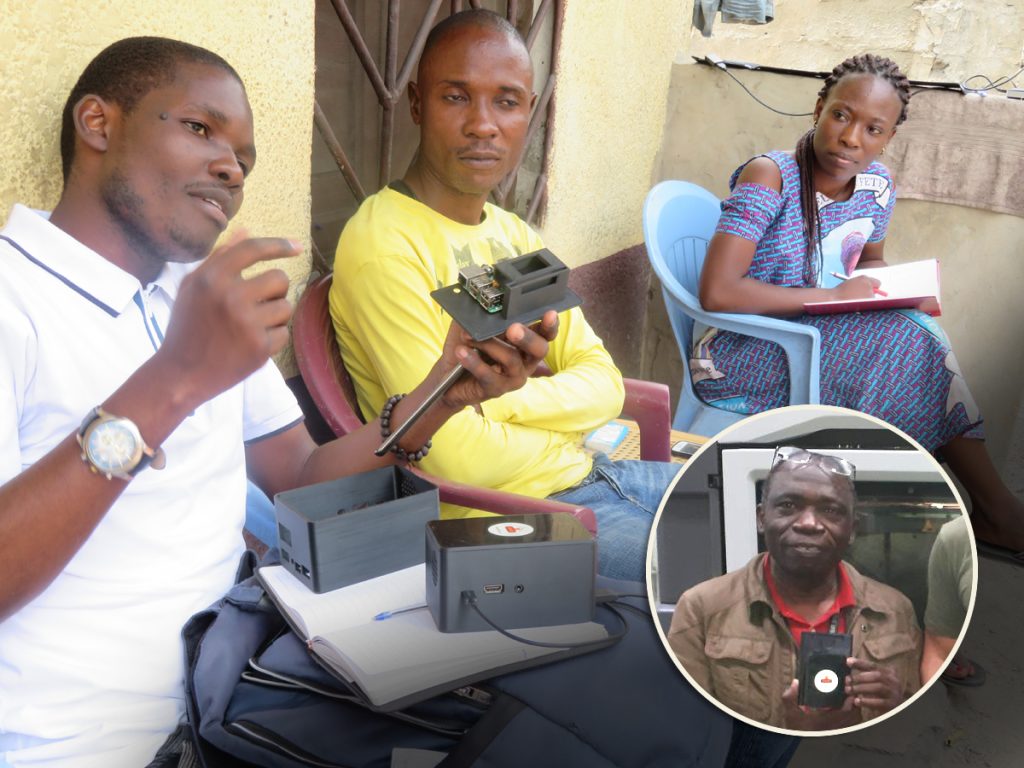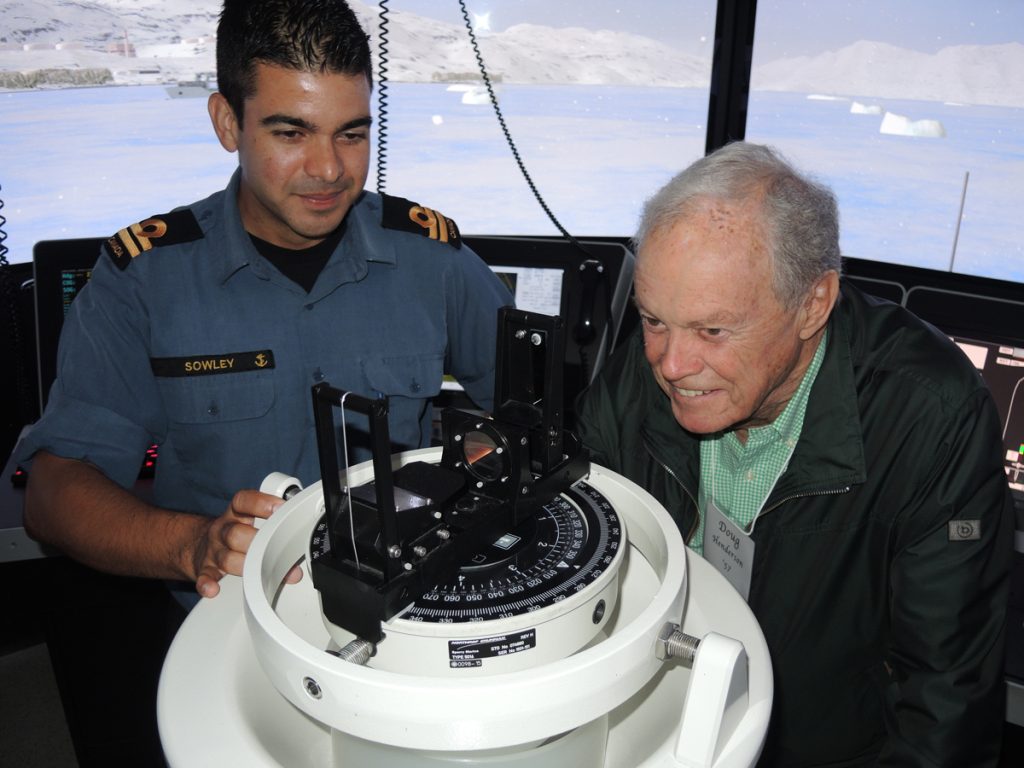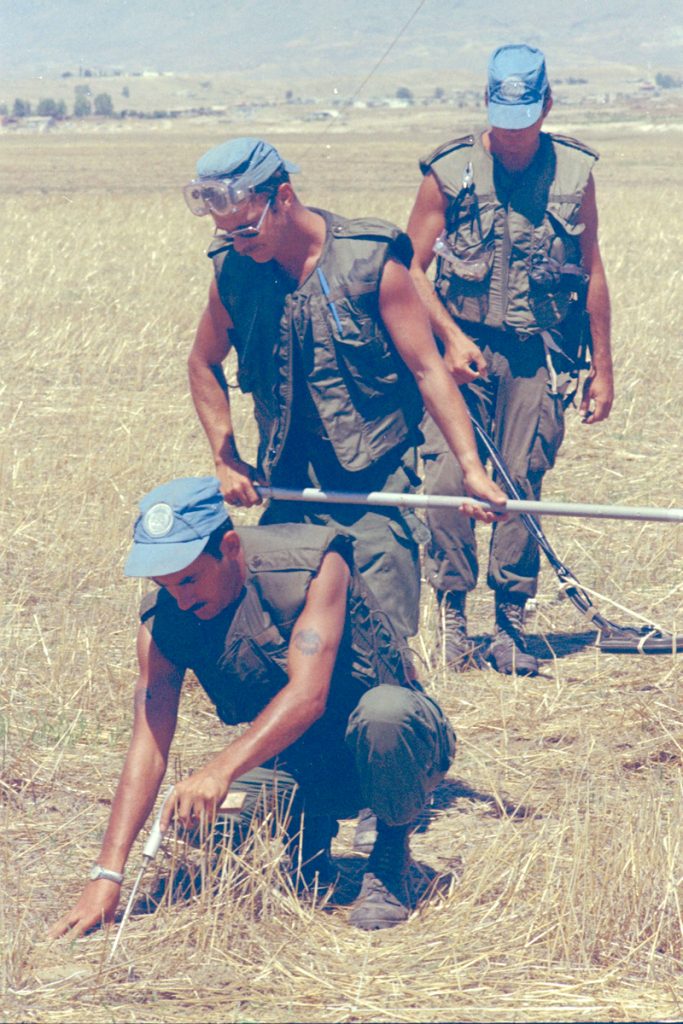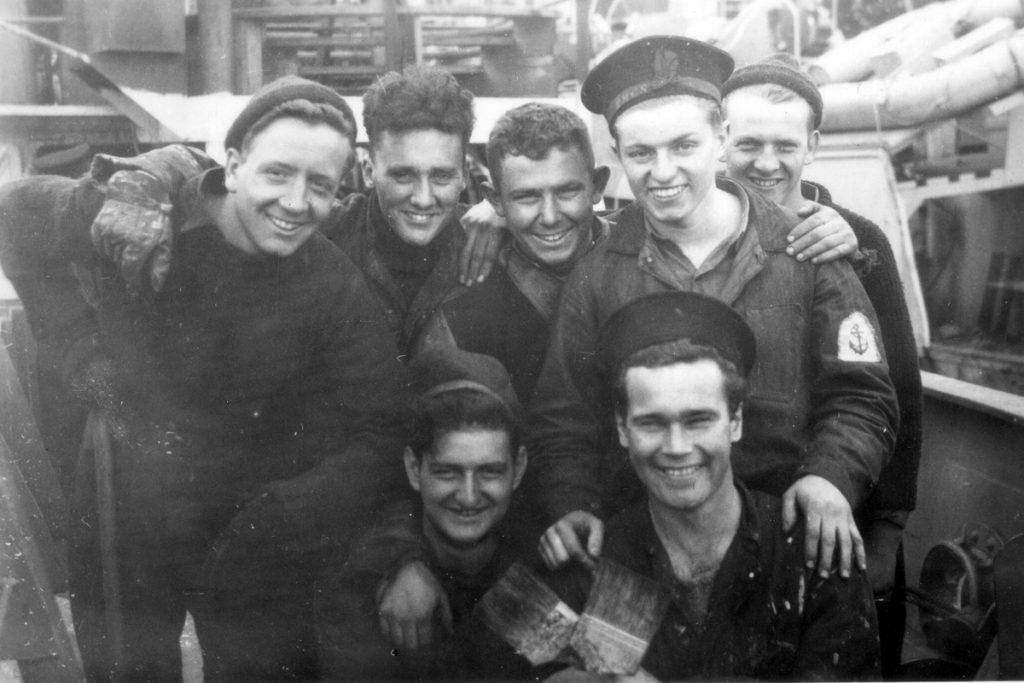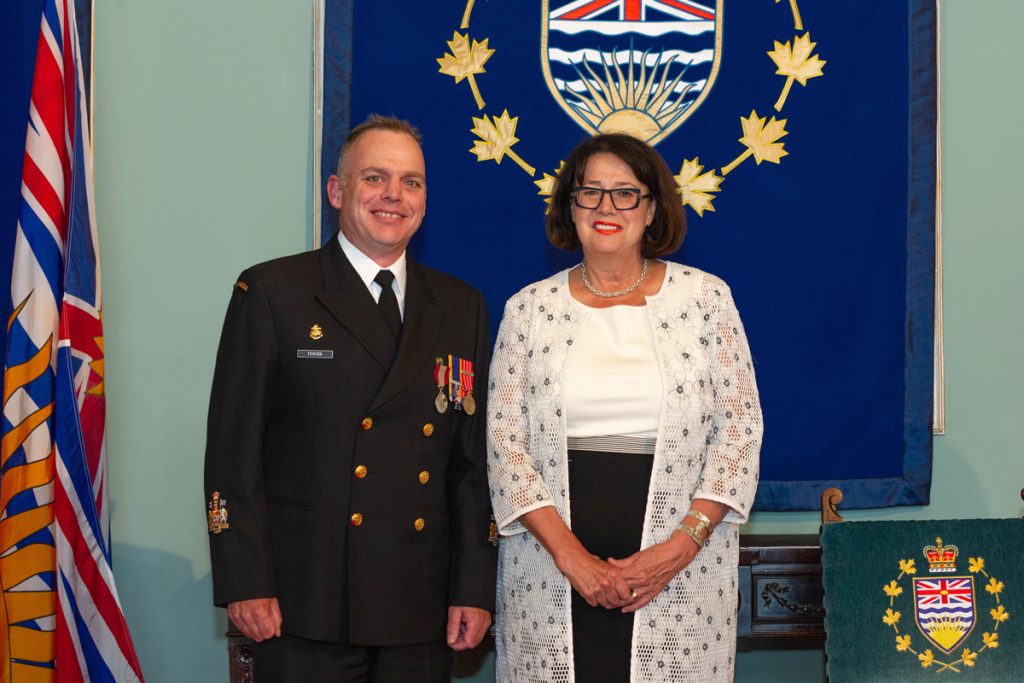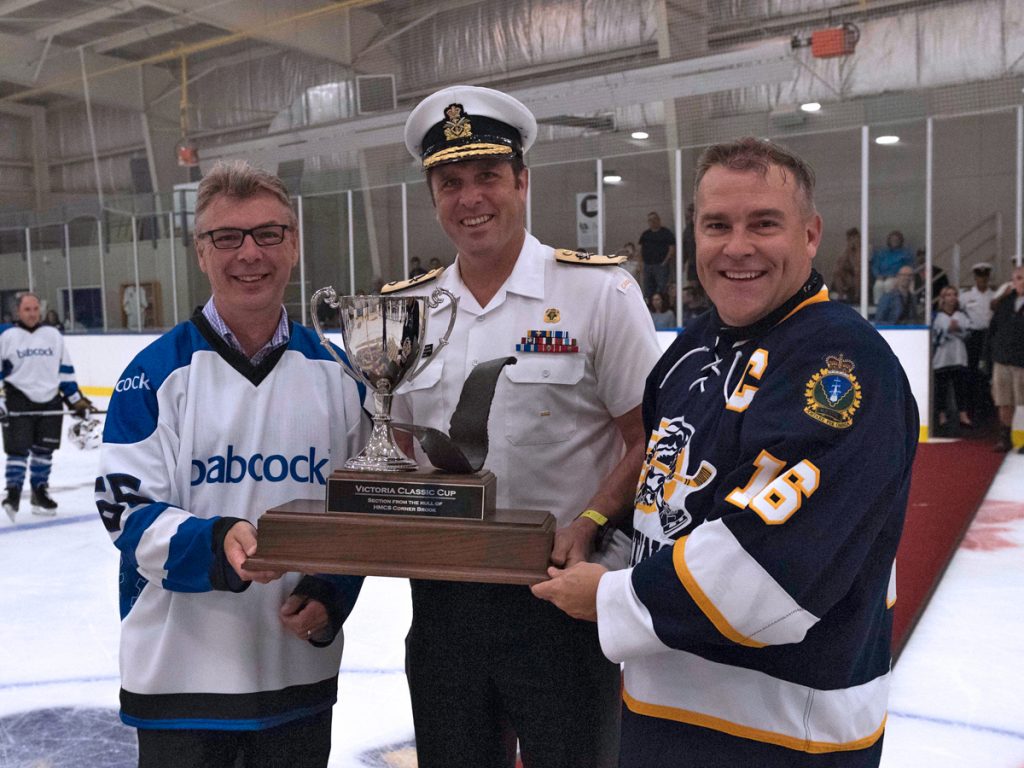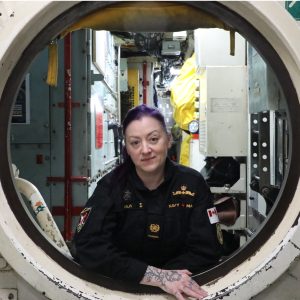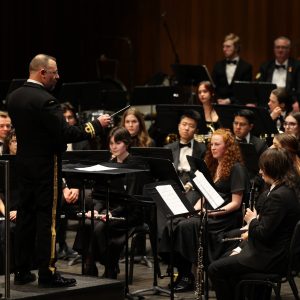Petty Officers receive formal acknowledgement
A/SLt Michelle Scott, MARPAC Public Affairs ~The formation welcomed three new Petty Officer Second Class sailors to the fleet in a PO2 Promotion Ceremony last week — the first of its kind on the West Coast.The ceremony was created to highlight the significance of the promotion to PO2 and the increase in roles and responsibilities that come with the rank. It was an initiative of Formation Chief CPO1 Tim Blonde, who also helped implement the same ceremony on the East Coast early last year. “You’re now becoming owners of the institution,” said RAdm Bob Auchterlonie, who presided over the ceremony. “This is a key step in your transition within the Royal Canadian Navy.”For PO2 Matt Douglass, a Naval Communicator on board HMCS Calgary, and one of the three newly promoted sailors, the significance wasn’t lost on him. “I definitely feel the added responsibility with a ceremony like this,” he said. “It gives the promotion itself a little more meaning to have the support of all the senior leadership here. It really means a lot.” This is what CPO1 Blonde was hoping would be conveyed to the newly promoted PO2s when he pitched the idea.“The development of the senior NCO (non-commissioned officer) is near and dear to my heart. Petty Officer Second Class serves a vital role in ships and the RCN,” explained CPO1 Blonde. “It is this position that I truly believe to be the real deck plate leaders on board our ships.”For many, it is a new type of leadership role, CPO1 Blonde explains. “Leadership is hard work, and as a PO2 you don’t lead from your desk, you must be visible.”In order to ease the transition to senior NCO, the promotion ceremony, which has the members presented their new ranks by the Admiral and their Commanding Officer, will be held in conjunction with professional development seminars. Going forward it is expected there will be four to five such ceremonies and seminars each year for all newly promoted PO2s and...
